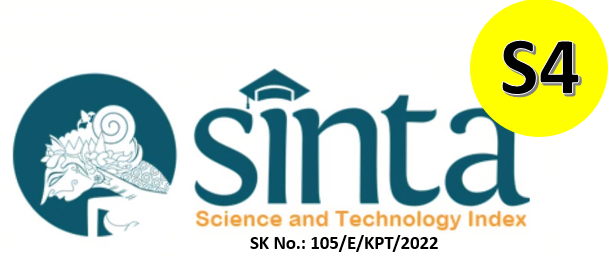Pencemaran Air dan Penentuan Titik Self-Purification Sungai di Kabupaten Banjar
DOI:
https://doi.org/10.29080/alard.v7i1.1335Keywords:
domestic waste, self purification, river waterqualityAbstract
The self-purification capacity is an important indicator for a healthy river. Organic and inorganic pollutants from various pollutant sources, both point sources, and non-point sources, in most rivers in Banjar Regency, cause a decrease in river water quality. This study aims to identify the distribution of river water quality pollution in Banjar Regency as the upstream of the Martapura River and determine the point of self-purification. A sampling of river water using the purposive sampling technique, taking into account the criteria for pollutant sources and the distance of pollution. The results of the concentration values were analyzed using a trend analysis technique, which connected the value of the concentration of pollutant elements with the distance of pollution to identify the distribution of pollution, and to determine the distance of purification. The results showed that the self-purification ability (pH and DO) decreased in concentration at all observation points.
Downloads
References
DLH Prov. Kalsel. (2017). Laporan Pemantauan Kualitas Air Sungai Provinsi Kalsel Tahun 2016. Banjarmasin: Dinas Lingkungan Hidup Provinsi Kalimantan Selatan.
Effendi, H. (2003). Telaah Kualitas Air Bagi Pengelolaan Sumber Daya dan Lingkungan Perairan. Kanisius.
Kholif, M. A. (2020). Pengelolaan air limbah domestik. Surabaya: Scopindo Media Pustaka.
Machdar, I. (2018). Pengantar Pengendalian Pencemaran: Pencemaran Air, Pencemaran Udara, dan Kebisingan. Yogyakarta: Deepublish.
Marlina, N., Hudori, H., & Hafidh, R. (2017). Pengaruh Kekasaran Saluran dan Suhu Air Sungai pada Parameter Kualitas Air COD, TSS di Sungai Winongo Menggunakan Software QUAL2Kw. Jurnal Sains & Teknologi Lingkungan, 9(2), 122–133. doi: 10.20885/jstl.vol9.iss2.art6
Muarif, M. (2016). Karakteristik Suhu Perairan Di Kolam Budidaya Perikanan. Jurnal Mina Sains, 2(2), 96–101. doi: 10.30997/jms.v2i2.444
Osman, H., Sumeep Bath, & Higgins, S. (2018, Agustus 14). How Temperature Affects The Quality of Fresh Water. Diambil 25 Mei 2021, dari IISD Experimental Lakes Area website: https://www.iisd.org/ela/blog/commentary/temperature-quality-fresh-water/
Ramadhani, E., Anna, M. S. A. N., & Cholil, M. S. M. (2016). Analisis Pencemaran Kualitas Air Sungai Bengawan Solo Akibat Limbah Industri di Kecamatan Kebakkramat Kabupaten Karanganyar (Skripsi, Universitas Muhammadiyah Surakarta). Universitas Muhammadiyah Surakarta, Surakarta. doi: 10/BAB%20II.pdf
Suprihatin, & Suparno, O. (2013). Teknologi Proses Pengolahan Air untuk Mahasiswa dan Praktisi Industri. PT Penerbit IPB Press.
Suwari, Riani, E., Pramudya, B., & Djuwita, I. (2011). Model Dinamik Pengendalian Pencemaran Air Kali Surabaya. Jurnal Bumi Lestari, 11(2), 234–248. Diambil dari http://agris.fao.org/agris-search/search.do?recordID=AV2012084837
Wahyuni, L. F., Rahman, M., Yusran, F. H., & Iriadenta, E. (2016). Kajian status kualitas air sungai riam kanan studi kasus sungai riam kanan di desa awang bangkal kecamatan karang intan kabupaten banjar. EnviroScienteae, 7(2), 88–92. doi: 10.20527/es.v7i2.464
Zubaidah, T., Karnaningroem, N., & Slamet, A. (2019). The Self-Purification Ability in the Rivers of Banjarmasin, Indonesia. Journal of Ecological Engineering, Vol. 20(2). doi: 10.12911/22998993/97286
Downloads
Published
How to Cite
Issue
Section
License
Authors who publish with this journal agree to the following terms:
- Authors retain copyright and grant the journal right of first publication with the work simultaneously licensed under a Creative Commons Attribution License that allows others to share the work with an acknowledgement of the work's authorship and initial publication in this journal.
- Authors are able to enter into separate, additional contractual arrangements for the non-exclusive distribution of the journal's published version of the work (e.g., post it to an institutional repository or publish it in a book), with an acknowledgement of its initial publication in this journal.
- Authors are permitted and encouraged to post their work online (e.g., in institutional repositories or on their website) prior to and during the submission process, as it can lead to productive exchanges, as well as earlier and greater citation of published work.



